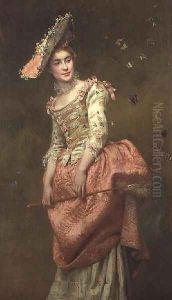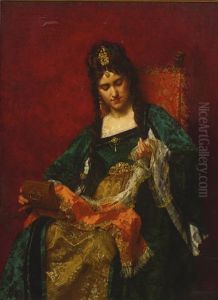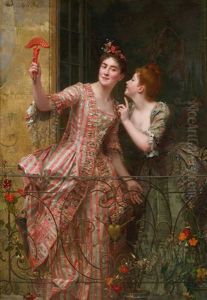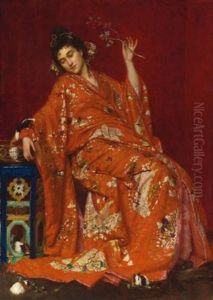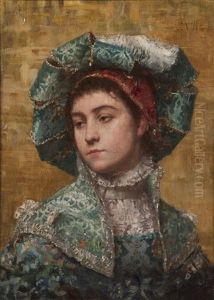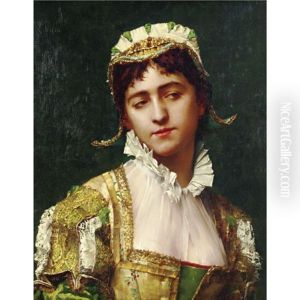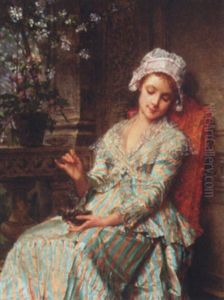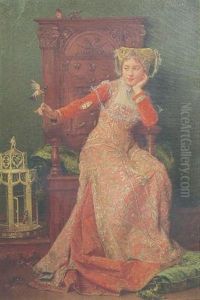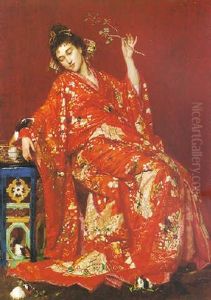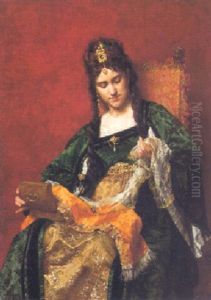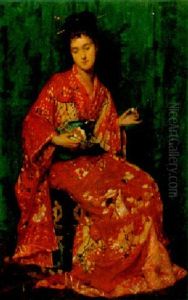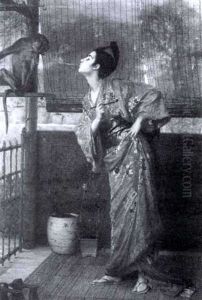Emile Villa Paintings
Emile Villa was a French painter known for his genre scenes, portraits, and Orientalist subjects. Born on December 2, 1836, in Paris, France, Villa was part of the 19th-century European art movement that sought to capture the essence of everyday life, as well as the allure of the exotic East.
Villa studied at the École des Beaux-Arts in Paris under the guidance of renowned artists such as Charles Gleyre and Alexandre Cabanel. During his time at the École, he honed his skills in the academic painting tradition, which emphasized classical subjects and techniques. However, Villa also became interested in the Orientalist trend, which was popular among European artists of the time. This interest was likely sparked by the French colonization of North African territories and the general European fascination with the cultures and landscapes of the Middle East and North Africa.
Throughout his career, Villa exhibited his works at the prestigious Paris Salon, the official art exhibition of the Académie des Beaux-Arts in Paris. His paintings were well-received, and he gained a reputation for his detailed and vivid portrayal of both French rural life and Orientalist scenes. Villa's Orientalist paintings, in particular, were marked by their rich colors, elaborate costumes, and intricate architectural details, capturing the imagination of a European audience that was eager for a glimpse into a world that seemed mysterious and exotic.
Despite the appeal of his Orientalist works, Villa's genre paintings, which depicted scenes from everyday life, were also significant. These paintings often showed the simplicity and the beauty of the rural French countryside, with a focus on the peasantry and their customs. Villa's ability to render the textures of fabric and nature contributed to the charm and realism of these works.
Villa continued to paint and exhibit throughout the latter half of the 19th century. His style remained largely consistent, reflecting the academic traditions he was trained in, even as the art world around him began to shift toward Impressionism and other modern movements. Emile Villa passed away in 1900, leaving behind a body of work that captures a unique blend of French tradition and Orientalist fascination.
